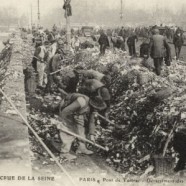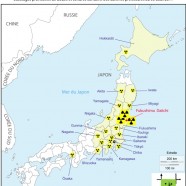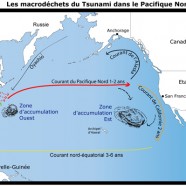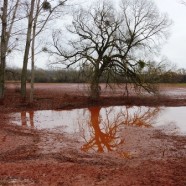Caution : fire risk !
Robin des Bois and GEIDE post-disaster
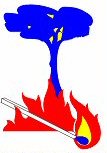 Nobody can be blamed for the outbreak and consequences of earthquakes of large magnitude. For forest fires, it’s a different story. Only the lightning escapes human responsibility. Man is the cause of more than 9 out of 10 forest fires.
Nobody can be blamed for the outbreak and consequences of earthquakes of large magnitude. For forest fires, it’s a different story. Only the lightning escapes human responsibility. Man is the cause of more than 9 out of 10 forest fires.
Barbecues, gas stoves, cigarettes, motorcycle incursions, quadbikes or other vehicles with internal combustion engines, campfires, fireworks and combustible wastes are all risks of fire in an environment that is vulnerable to conflagration. A spark can ignite thousands of acres and a small fire can in a few seconds become uncontrollable.
The waste from the Japanese earthquake and tsunami
1. Radioactive contamination
On 11 March 2011 there was a legal vacuum in Japan concerning radioactive waste resulting from a nuclear disaster. Current waste management Law places technical and financial responsibility for waste from natural disasters with local authorities. However, this excludes radioactive waste. The Law on rehabilitation of contaminated soil excludes from its scope radioactive soils and waste. The Law on the management of radioactive materials and waste only concerns those inside the nuclear plants.
Millions of Stowaway Passengers Circling Around the Pacific Ocean
The tsunami which followed the Japanese earthquake devastated around 300km of coastal cities, towns, farmlands and greenhouses along Japan’s Pacific coastline. The wave was reported to have spread up to 10km (six miles) inland and inundated around 500km². Not only did the earthquake and tsunami create an estimated 25 million tonnes of rubble, but when the tsunami receded it dragged with it countless quantities of waste in the flooded zone.
The After Shock
Climatic, geological, or anthropogenic natural disasters produce in a couple of seconds, hours or days, enormous amounts of waste, so much so that authorities are unable to handle the quantity with ordinary means. The rupture of “lifelines”, namely water, electricity, transportation routes and communication lines, send survivors into a deep confusion. The accumulation of rubble and waste increases the shock of the populations and postpones the first steps towards the return to normalcy.
The 3 million tonnes of rubble generated by the earthquake in Los Angeles in January 1994 led the city to reinforce and multiply its recycling capacities. Provisional transit and elimination sites for future earthquakes were pre-selected.
The Disaster Domain Expands
The extravagant iodine-131 content around the area of the Fukushima Daiichi Nuclear Power Plant is a result of leaching of emergency cooling waters used by firefighters and emergency workers. At Fukushima and at French nuclear facilities, there is no collection device for these cooling waters whereas all warehouses storing chemical products are legally bound to be equipped with a collection basin of polluted water used to extinguish fires. The iodine-131 content is also a result of the consequent radioactive dust deposits of the explosions in the heights of the nuclear islets, namely the buildings, the reactors, and the pools. The iodine-131 is one of the indicators of pollution. Other measures will later show similar deviations from standards for cesium-137 and plutonium.





